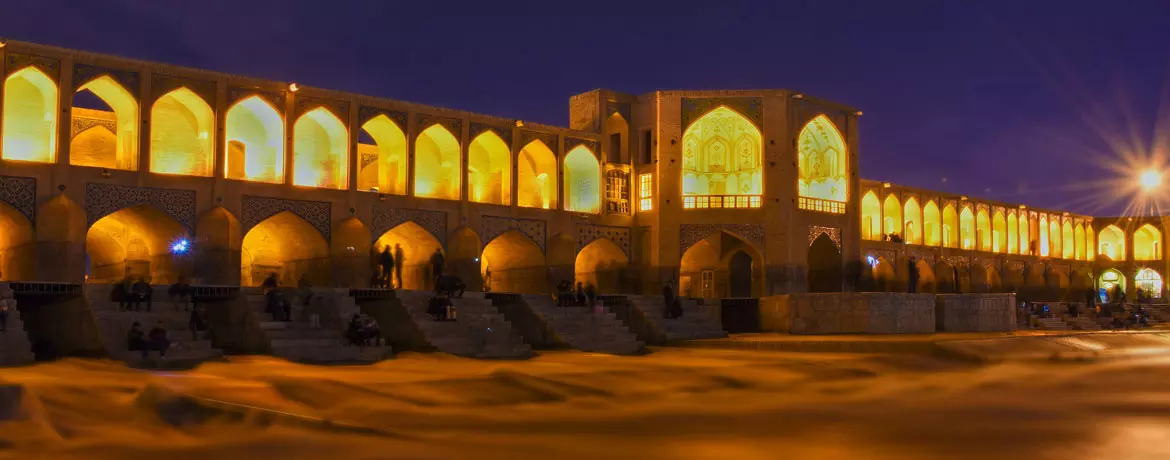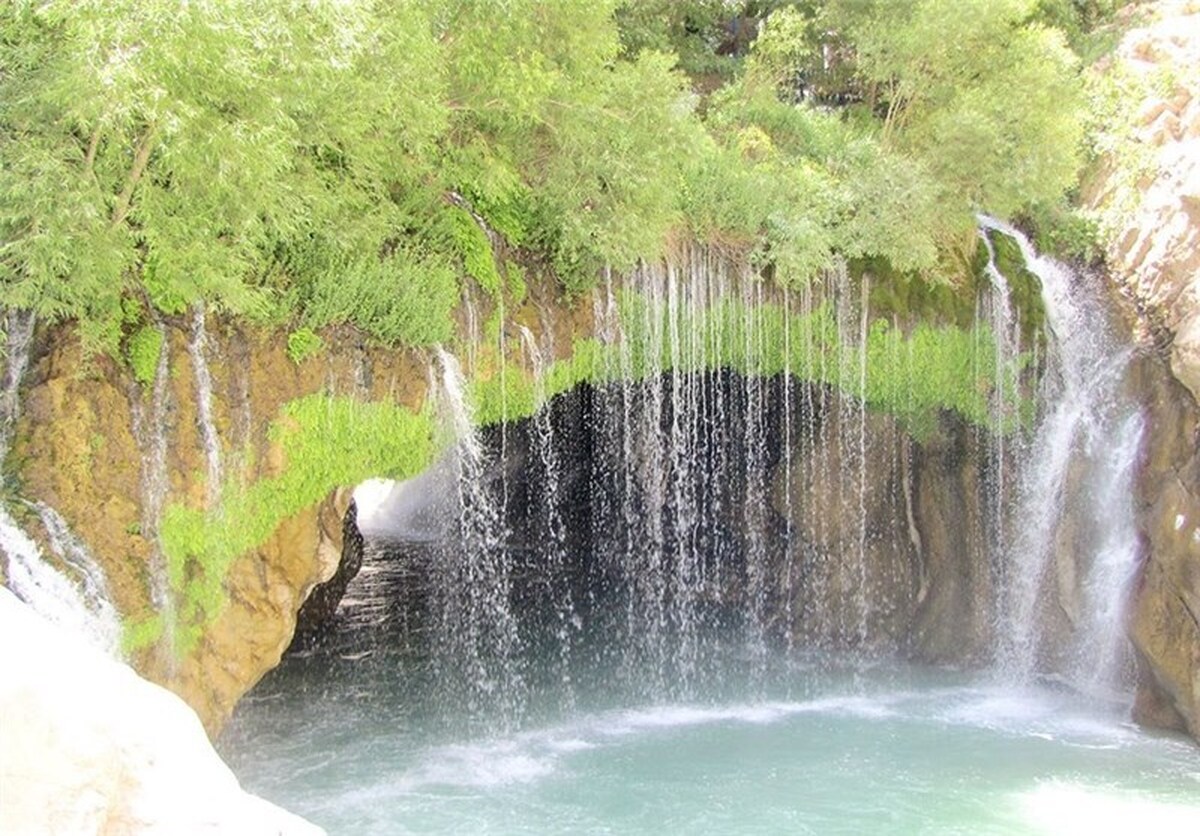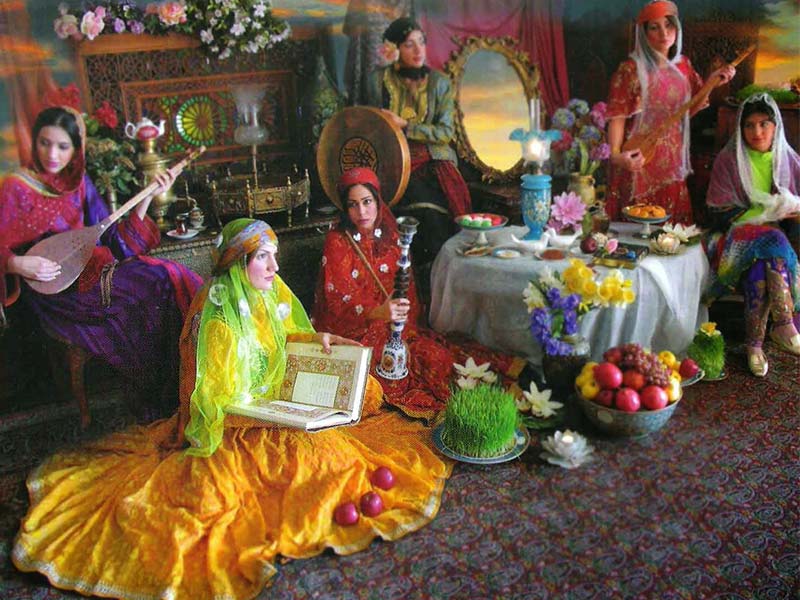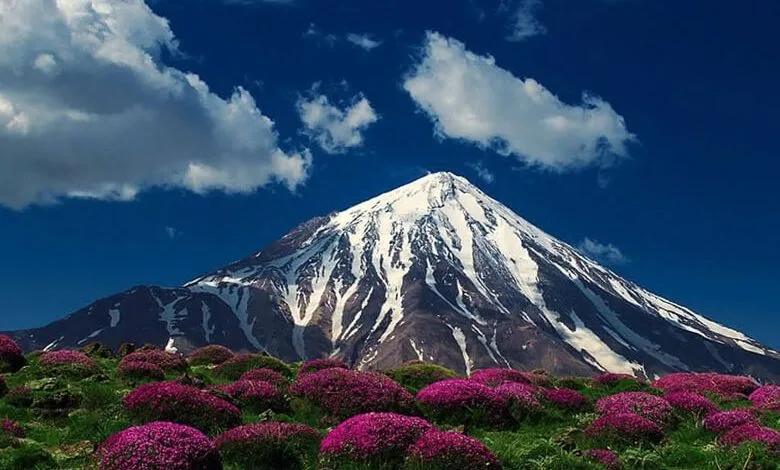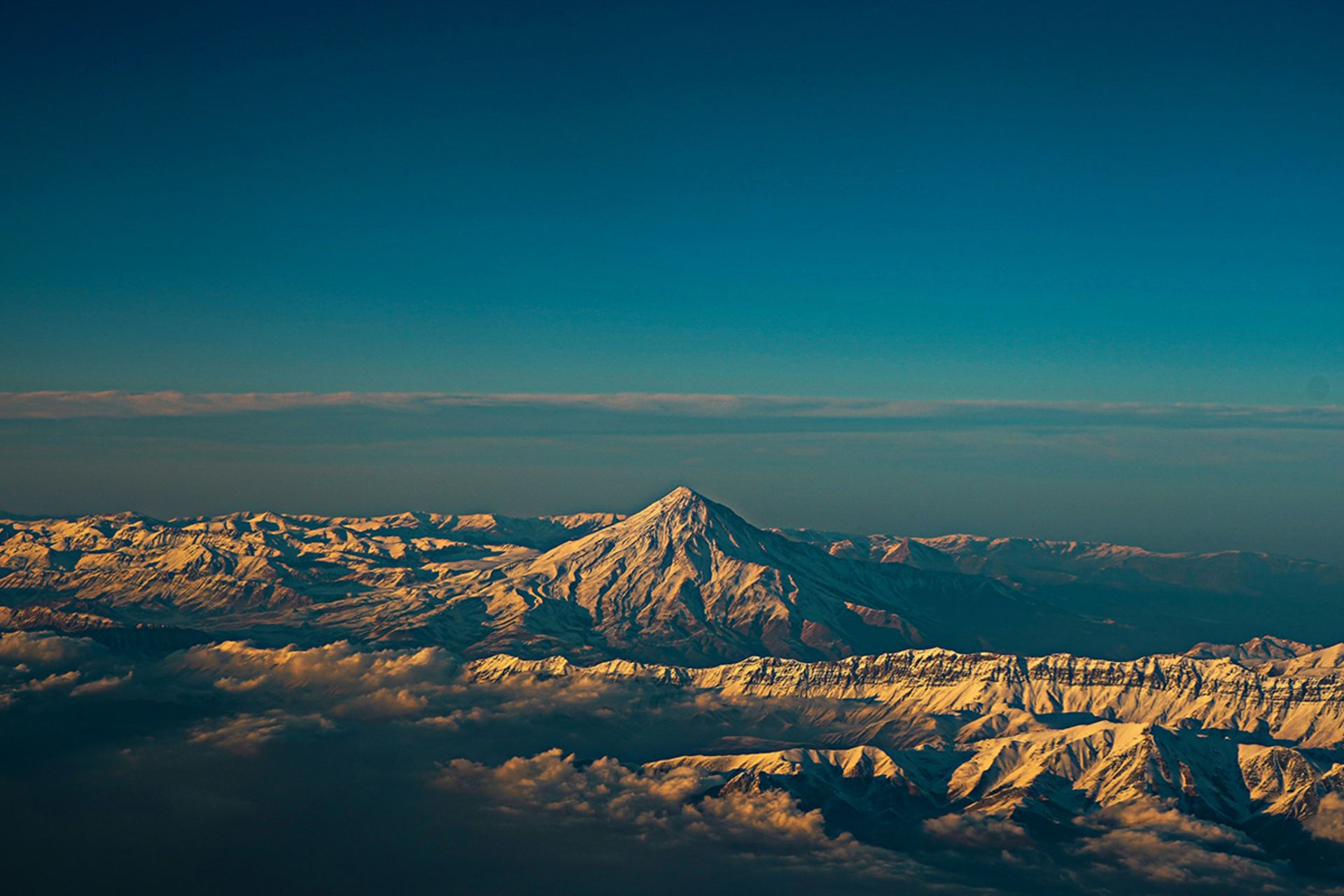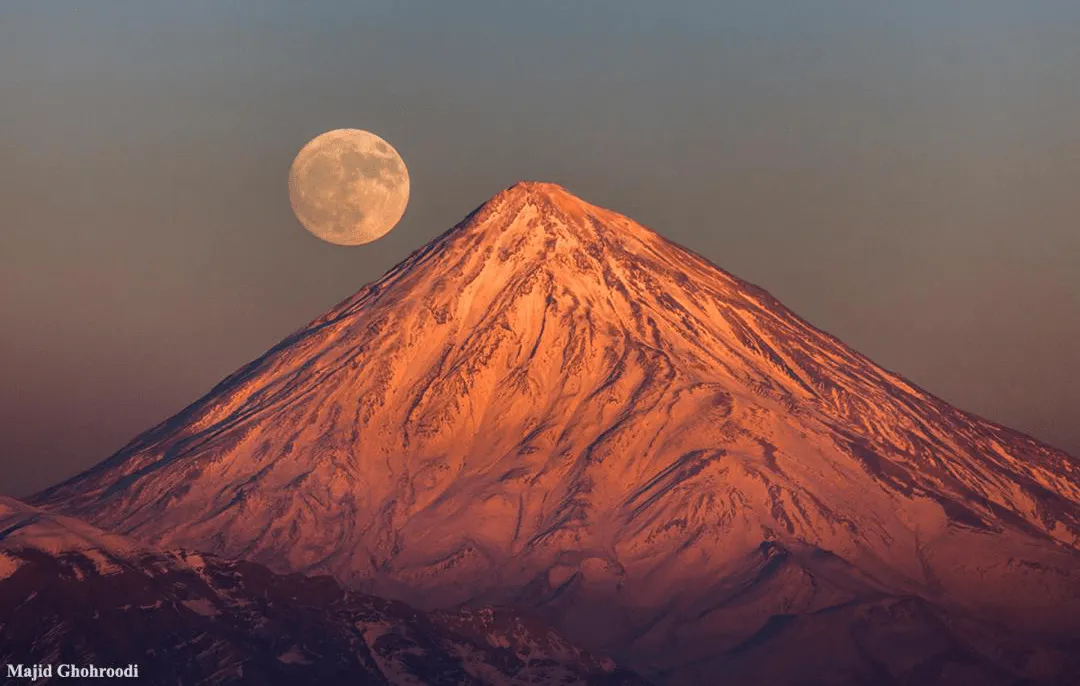Attractions of Kermanshah | From Taq Bostan to Bisotun
Kermanshah is a prominent destination for those interested in history, culture, and nature. This city, with its beautiful natural landscapes, is complemented by the warm hospitality of its people, who will immediately catch your attention upon arrival. The attractions in Kermanshah are a blend of historical sites and pristine nature, creating a multifaceted experience for travelers. If you’d like to embark on a brief journey into the heart of this city’s history and nature, join us in this article from Gulf City Pedia’s travel magazine.
The History of Kermanshah | The Passage of Time Through Kermanshah
Before exploring the attractions of Kermanshah, it’s essential to understand the historical periods and cultural roots of its notable sites. Kermanshah’s history dates back to 3500 BCE. A look into its past reveals that this city has witnessed significant historical epochs.
During the Sassanian era, Kermanshah served as the second capital and residence of the kings. In the Islamic period, the city came under the rule of the Hasnavian and Bani Ayaran dynasties. Kermanshah has experienced numerous historical transformations, which have significantly altered its landscape. During World War I and II, the city was occupied by British and Russian forces. Despite Iran’s declared neutrality in these global conflicts, Kermanshah did not escape the consequences.

The City’s Historical Struggles and Name Changes
In the years following, Kermanshah was again embroiled in the Iran-Iraq War, suffering significant damage. Over the course of its history, the city has undergone multiple name changes and has been known as Kambadan, Karmishin, Kermanshan, and Bakhtaran. Locally, it is referred to as “Kermanshan,” derived from the term “Kermanj,” which means “peasant” and reflects the local cultural heritage.
Climate of Kermanshah | Best Time to Visit
Many travelers consider the climate of Kermanshah before booking their flights to the city. One of the significant advantages of this ancient and historic city is its pleasant climate, which attracts numerous visitors each year. Kermanshah’s weather is generally cool throughout most of the year, with spring and summer offering the most favorable conditions.
For those seeking an affordable trip to Kermanshah, autumn and winter are the best choices. However, keep in mind that winter travel, despite the cold, has its own appeal. Traveling during the colder months doesn’t mean you can’t enjoy Kermanshah’s attractions; the city’s natural beauty transforms with the seasons, offering unique and captivating experiences.
Attractions of Kermanshah in Spring
If you want to experience Kermanshah at its most beautiful, pack your bags for this city in the spring. The sights of Kermanshah during Nowruz and the spring season are unparalleled. The mild and cool weather, combined with the lush greenery of the trees, gives Kermanshah a stunning appearance. Some of the top attractions to visit in Kermanshah during spring and the holiday season include:
Kermanshah’s Rock Tombs | Ancient Burial Sites
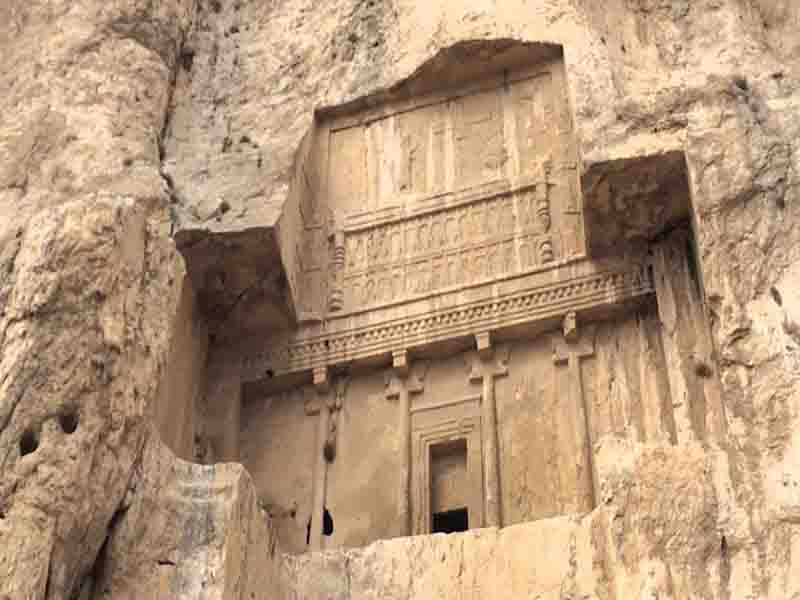
In ancient times, Iranians used these rock tombs to bury their dead. These structures were common during the Median and Achaemenid periods. In the spring, you can visit these tombs and admire the artistry and organization that ancient people invested in their construction. Notable rock tombs in Kermanshah include Ishaqvand, Davood’s Shop in Sanandaj, Ravansar, Shamsabad, Direh, San Rostam, the Lovers’ Tower, and Bornaj.
Statue of Hercules | A Parthian Era Statue
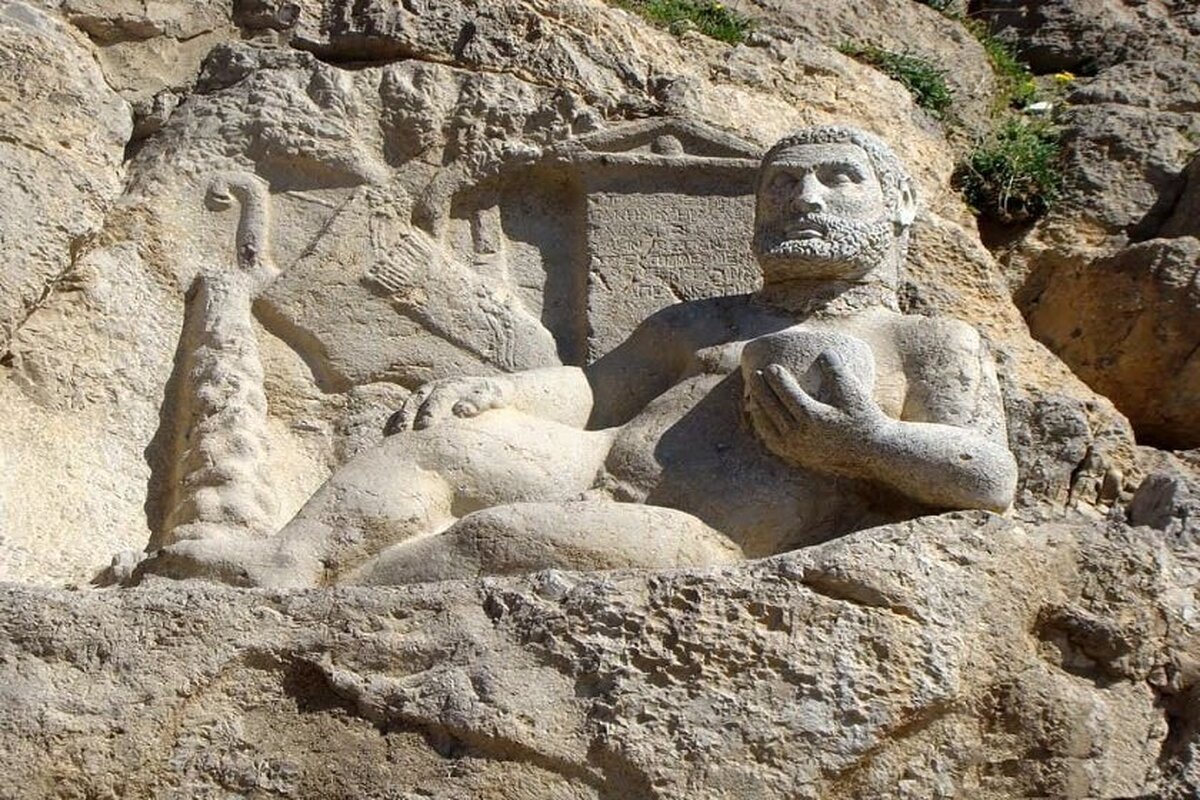
This beautiful statue, accidentally discovered in 1951 during excavation work, is located not far from Bisotun. The head of the statue has been stolen multiple times, and currently, the head is a limestone replica crafted by contemporary artists.
Attractions of Kermanshah in Summer
Kermanshah also attracts many tourists during the summer, even more than in autumn and winter. If you missed the spring beauty of Kermanshah, you can still enjoy this beautiful city in the summer. Here are some of the best places to visit in Kermanshah during the summer:
Taq-e Bostan
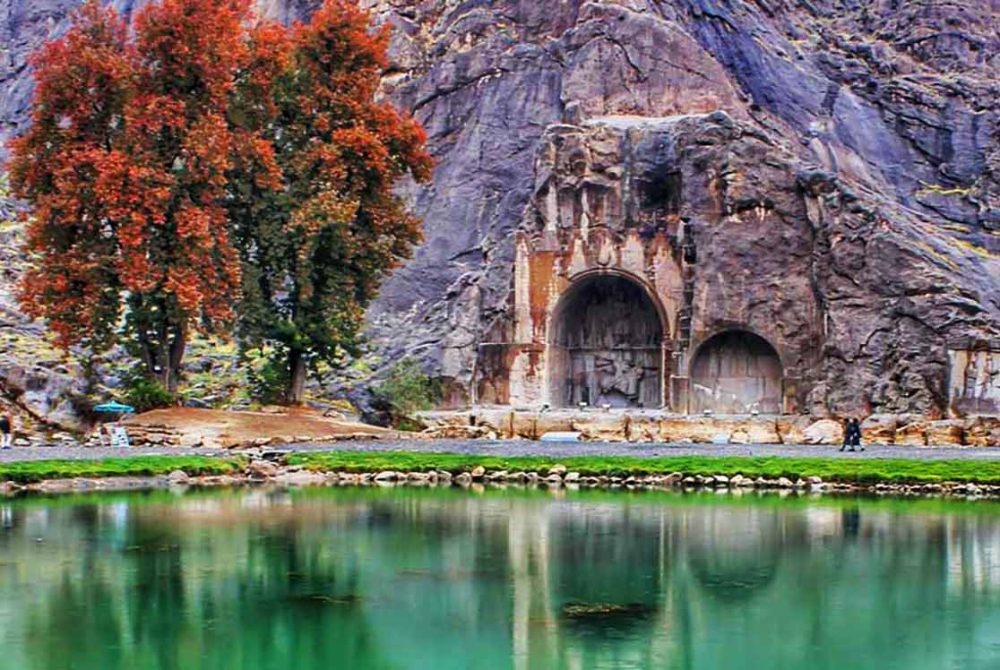
Taq-e Bostan is one of Kermanshah’s most famous attractions. In the 3rd century CE, a Sassanian king chose Taq-e Bostan, an important area of the city, to engrave inscriptions from his reign on its walls. The site’s geographical location was strategic, lying along the Silk Road and surrounded by pristine natural beauty.
The carvings at Taq-e Bostan depict several periods of Sassanian royal coronations. You can see images of musicians, hunters, armored soldiers, and inscriptions in Pahlavi script. Taq-e Bostan consists of two arches, large and small, with the small arch featuring carvings of Shapur II and III along with their inscriptions.
In addition to the arches and inscriptions, the clear spring across from Taq-e Bostan is another highlight, providing a stunning view that has remained unchanged for centuries.
Bisotun
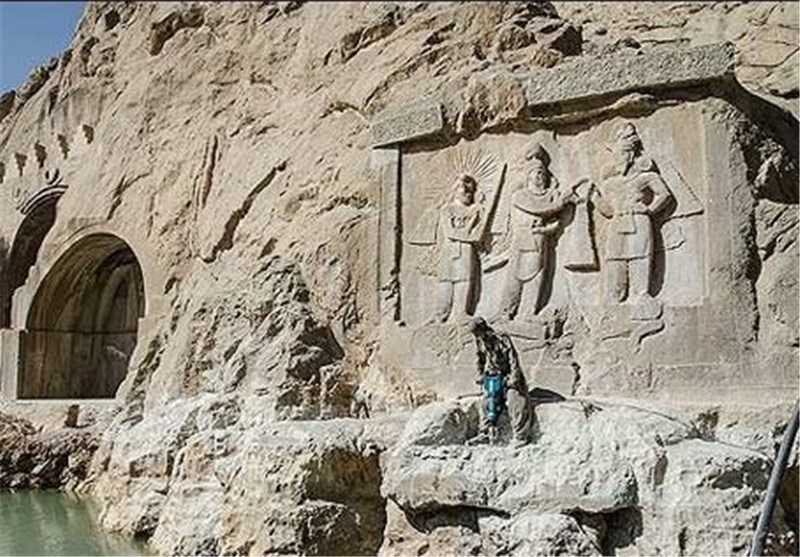
Bisotun, located about 30 kilometers from Kermanshah, is one of the most unique attractions in the region. Dating back over four thousand years, Bisotun was used for hunting and as a living area in caves and cliffs during the Paleolithic era. Over time, Bisotun has seen many historical changes.
Many of Kermanshah’s attractions are part of the Bisotun complex, including the Statue of Hercules, the Bisotun Bridge, Shah Abbas Caravanserai, the bas-relief of Mithridates II, Farhad’s Carving, and the Medean Temple. This complex is listed as a UNESCO World Heritage Site.
The Bisotun wall, with a height of 1,300 meters and a width of 5,000 meters, is considered one of the most technical climbing walls in the world, often referred to as the Everest of rock climbing. The inscriptions on Bisotun are not only key historical documents but also written in Elamite, Akkadian, Old Persian, and cuneiform script.
Anahita Temple

The Anahita Temple, dedicated to the goddess of water and fertility, is an ancient stone structure dating back to before Christ. It is the second oldest stone temple in Iran after Persepolis. The temple is situated on a 32-meter-high hill. Its Iranian and Greek architectural design is truly impressive.
Notable features of the Anahita Temple include its stone channels carrying water and the expansive Kangavar Plain, offering a breathtaking view. If you visit the Anahita Temple, make sure to also explore the Kanganar Plain, one of the greenest attractions in Kermanshah.
Goor-e Qolleh Cave | A Natural Wonder in the Heart of the Mountain
Goor-e Qolleh Cave is one of the most remarkable caves in Iran and a top attraction in Kermanshah. Stretching 12 kilometers in length, it is the longest cave in Iran. The cave maintains a cool temperature, never exceeding 17 degrees Celsius throughout the year. Located near the lush Shahou Mountains, it offers a pleasant environment for visitors. If you’re considering a summer trip to Kermanshah, Goor-e Qolleh Cave and its surrounding nature provide a perfect spot for a few hours of picnicking.
Sarab-e Niloufar | A Close-Up View of Water Lilies

For a unique photo opportunity of Kermanshah’s attractions, Sarab-e Niloufar is an excellent choice. Here, you can see buds and leaves of blue water lilies emerging from the clear water, covering a vast area. This spring holds special significance for the local people, with some believing that Khosrow Parviz hid a great treasure at the bottom of this lake. If you’re looking for one of Kermanshah’s best recreational spots for a short family trip, Sarab-e Niloufar is a suitable option. The area offers boat rides and amenities such as pavilions, barbecues, a buffet, and parking.
Flower Garden of Kermanshah | A Field of Beautiful Iranian and Foreign Flowers
The Flower Garden is a distinctive attraction in Kermanshah that creates a unique atmosphere. Entering this garden feels like stepping into paradise, with sections featuring different botanical styles, including Iranian, Japanese, French, and Italian landscapes. If you are interested in flowers and plants or seeking a great place for photographs, the Flower Garden is one of the best spots in Kermanshah for capturing vibrant moments.
Sarab-e Sahneh | An Exciting and Refreshing Picnic Spot
Another popular recreational spot in Kermanshah is Sarab-e Sahneh. If you want to escape the city’s hustle and bustle, a drive of less than one hour from the city center will take you to this pristine picnic area. Sarab-e Sahneh embodies all the natural beauty of Kermanshah, featuring towering mountains, fruit orchards, tall green trees, and a powerful waterfall.
The freshness of this spring will rejuvenate you and provide unparalleled tranquility. Enthusiasts of caving and mountaineering can also visit the Kikaus Cave. Remember, Sarab-e Sahneh is just one part of Kermanshah’s nature. The city of Sahneh is one of the most important historical areas of Kermanshah, with roots extending back to pre-Islamic times. In addition to enjoying nature, you can also see Achaemenid rock tombs in this region.
Tekiyeh-e Mo’eenolmolk | A Relic from the Qajar Era

Tekiyeh-e Mo’eenolmolk is a Qajar-era building in Kermanshah. It underwent significant changes during the Constitutional Revolution but continues to serve as a prominent attraction in Kermanshah today.
Originally named Mo’in al-Raiyah, it was renamed Tekiyeh-e Mo’eenolmolk after a fire during the Constitutional Revolution and subsequent renovations. The building features exquisite tilework and Iranian art and architecture.
Tekiyeh-e Mo’eenolmolk consists of three sections: Hosseiniyeh, Zaynabiyeh, and Abbasieh. The walls are adorned with painted tiles depicting scenes of mourning, chest-beating, Kermanshahi poetry, Takht-e Soleiman, and kings. Each tile tells a historical or religious story, making the building famous for its “storytelling tiles.” Additionally, the Abbasieh section houses a museum of clothing, jewelry, and ethnography. If you are interested in historical sites, Tekiyeh-e Mo’eenolmolk is one of the best attractions in Kermanshah.
Haj Shahbaz Khan Bathhouse | A Historical Structure with Iranian Artistic Fusion

The construction of historical buildings in Kermanshah, including the Haj Shahbaz Khan Bathhouse, mainly took place during the era of Mohammad Ali Mirza. Although it may not feature contemporary architecture or paintings, the Haj Shahbaz Khan Bathhouse has a somewhat more modern ambiance compared to many of Kermanshah’s attractions.
In this bathhouse, you can admire numerous architectural and decorative details on the walls and ceiling. Inside, there are intricate vaulted domes adorned with tilework and wall paintings. The historic bathhouse allows visitors to explore all sections of a traditional bathhouse, including the hot room (Garmkhaneh), cold and hot water pools (Kheyzineh), main hall (Sarbineh), and changing rooms (Rokhtakan).
Imad al-Dawlah Mosque | A Mosque with a Century-Old History
Another notable attraction from the Qajar era in Kermanshah is the Imad al-Dawlah Mosque, which boasts a history of over a century. As you enter the mosque’s courtyard, you will be struck by the beauty of Iranian and Islamic architecture, with all the mosque’s porticos decorated in turquoise and colorful tiles.
In addition to the internal architecture, a small pond in the center of the mosque’s courtyard enhances the aesthetic appeal of this sacred and historic site. Located near the Grand Bazaar of Kermanshah, you can visit the Imad al-Dawlah Mosque through the jewelry market section of the bazaar.
Kermanshah Traditional Bazaar | Enjoy Shopping in a Historic Market
The Kermanshah Bazaar is one of the most fascinating historical sites and significant attractions in Kermanshah. Its maze-like alleys with vaulted ceilings bring the atmosphere of centuries past to life. This traditional bazaar is one of the largest covered markets in Iran and is ideal for purchasing souvenirs from Kermanshah.
The bazaar comprises various sections, including the Copper Market (Bazar-e Mosgarha), Jewelry Market (Bazar-e Zargarha), Arsenal Market (Bazar-e Topkhaneh), Turkish Market (Bazar-e Torkha), Jewish Market (Bazar-e Kalimiha), Wholesale Market (Bazar-e Bankdarha), Cloth Market (Bazar-e Bazzazha), and Chaleh Hassan Khan Market (Bazar-e Chaleh Hassan Khan). If you’re looking for a place where you can enjoy both sightseeing and shopping, the traditional bazaar of Kermanshah is an excellent choice.
Attractions Around Kermanshah
Kermanshah itself is rich in attractions, but the surrounding areas also offer unique and beautiful sites. Here are some must-see places around Kermanshah:
Zīj-e Manijeh | Residence of Manijeh, Bijan’s Beloved

One of the beautiful historical sites near Kermanshah is a fortress believed by local legends to have once been the residence of Manijeh. You may have heard the romantic story of Bijan and Manijeh. Zīj means observatory, but it is said that in the past, this location served as a way station. The structure is a rectangular fortress with corridors and rooms.
Taq-e Gara | A Historical Checkpoint on the Kermanshah-Sarpol-e Zahab Route
Taq-e Gara is an ancient and valuable historical structure located on the Kermanshah to Sarpol-e Zahab road. Situated near the Patak border checkpoint, this ancient edifice reflects the grandeur and magnificence of past Iranian civilizations. Historians date the construction of this structure to the Sassanian era, considering it one of the architectural masterpieces of that time. Taq-e Gara is not only historically significant but also important for its geographical location and natural vistas, attracting many visitors each year.
Famous Foods of Kermanshah
Kermanshah is a treasure trove of sights and tastes that will leave you with unforgettable memories. One of the highlights of visiting Kermanshah is sampling its local cuisine, which is unique and distinctive in its own right. If you’re a food enthusiast, a must-visit spot in Kermanshah is Taq-e Bostan, where you can savor delicious kebabs at nearby restaurants. Besides the renowned Kermanshahi kebabs, dishes like Khoreshe Khelal (stew with sliced meat), Dastpich (a type of meat roll), and Ash-e Tarkhineh (sour wheat soup) are highly popular among locals.
Souvenirs of Kermanshah | Introduction to Various Foods and Handicrafts
Kermanshah | A Journey into History and Nature
To make the most of your visit to Kermanshah, it’s important to choose the right time for exploring so you can comfortably visit all the attractions. If you’ve traveled to this city, we would love to hear about any other notable places in Kermanshah that might not have been mentioned in this guide.
Frequently Asked Questions about Kermanshah Attractions
What are the most important attractions in Kermanshah?
The most significant attractions in Kermanshah include Taq-e Bostan, the Shafi’i Grand Mosque, Imad al-Dawlah Mosque, Takiyeh-ye Mo’een al-Ra’aya, and the Traditional Bazaar of Kermanshah.
How far is Bisotun from Kermanshah?
The historic site of Bisotun is less than 40 kilometers from Kermanshah. You can reach the Bisotun historical complex in about half an hour by car from the center of Kermanshah.
What is the best season to visit Kermanshah?
Kermanshah experiences cold winters with frequent rainfall. To enjoy the natural beauty of the region, the best time to visit is late winter or spring.

